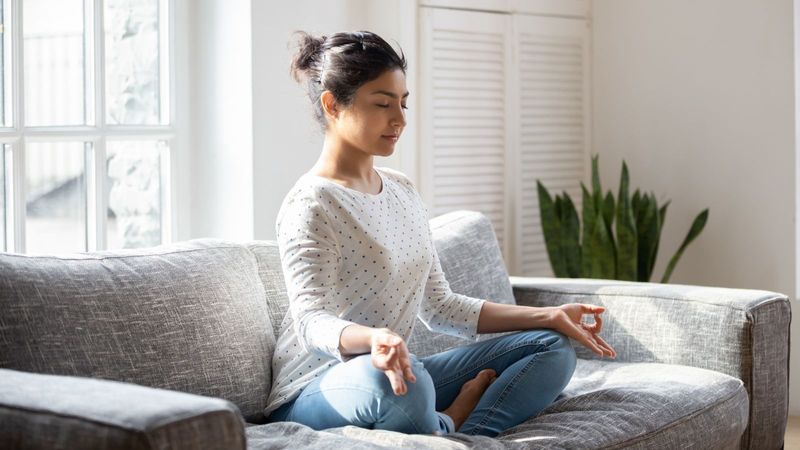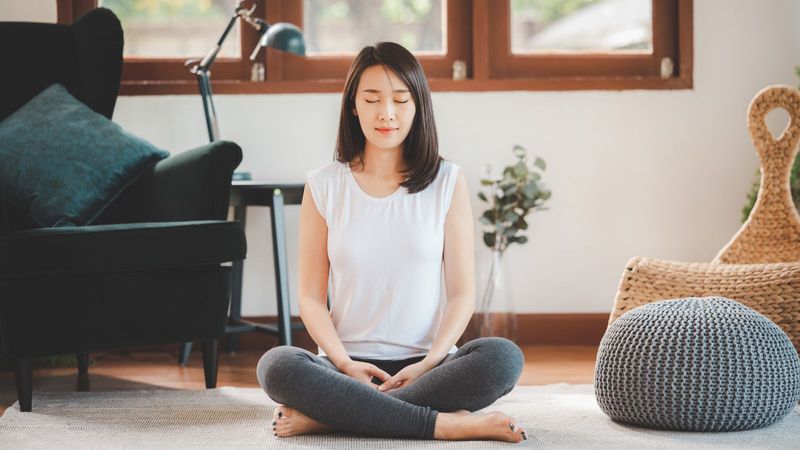Anxiety is a complex and multifaceted mental health condition characterised by persistent feelings of worry, fear, or unease. It can manifest in various forms, such as generalised anxiety disorder (GAD), social anxiety, panic disorder, or specific phobias. Anxiety often goes beyond everyday stress and can significantly impact a person's daily life, relationships, and overall well-being.
Physiologically, anxiety triggers the body's stress response, leading to the release of stress hormones like cortisol and adrenaline. This response prepares the body to face a perceived threat, commonly known as the 'fight or flight' response. While this response is crucial for survival in certain situations, chronic activation due to anxiety can have detrimental effects on both mental and physical health.
In the hustle and bustle of our daily lives, stress and anxiety often become unwelcome companions. But, how to control anxiety? Amidst the chaos, our breath can be a powerful ally in restoring a sense of calm and balance. The ancient practice of mindful breathing has proven to be an effective tool for managing anxiety, providing instant relief in times of heightened stress. We bring to you the best breathing tips for anxiety.
Breathing as a powerful ally against anxiety

One of the remarkable aspects of managing anxiety lies in the simplicity of our breath. Deep, intentional breathing techniques can act as a powerful tool to counteract the physiological and psychological symptoms of anxiety. Here is why you need some tried and tested breathing tips for anxiety.
How do anxiety deep breathing techniques help?
1. Activating the relaxation response
Deep breathing triggers the body's relaxation response, activating the parasympathetic nervous system. This counteracts the stress response, promoting a state of calmness and reducing the production of stress hormones. As a result, heart rate decreases, blood pressure stabilises, and muscle tension diminishes.
2. Regulating oxygen and carbon dioxide levels
Anxiety often leads to shallow and rapid breathing, disrupting the balance of oxygen and carbon dioxide in the body. Deep breathing techniques for anxiety relief, such as diaphragmatic breathing, help restore this balance. Adequate oxygen intake and proper carbon dioxide elimination contribute to improved respiratory efficiency and a sense of calm.
3. Increasing mind-body awareness
Mindful breathing is a technique that can help individuals to concentrate on the present moment by focusing their attention on their breath. By concentrating on the rhythm of inhalation and exhalation, individuals cultivate mindfulness, redirecting their thoughts away from anxiety-inducing concerns. This heightened awareness promotes a sense of control and reduces the grip of anxious thoughts.

4. Calming the amygdala
The amygdala, a part of the brain responsible for processing emotions, plays a central role in anxiety. Deep breathing has been shown to modulate the activity of the amygdala, reducing its hyperactivity associated with anxiety. This neurobiological effect contributes to a more balanced emotional state.
5. Creating a pause for reflection
Incorporating breathing exercises provides a brief pause in anxious feelings. This pause allows individuals to step back, gain perspective, and interrupt the cycle of anxious thoughts. It acts as a grounding technique, promoting a sense of stability and control.
How to control anxiety?

Incorporating breathing exercises into daily life can be a valuable component of anxiety management. Whether practised proactively to build resilience or employed at the moment to alleviate acute symptoms, intentional breathing empowers individuals to take an active role in their mental well-being. As a readily accessible and versatile tool, breathing offers a path to serenity amidst the challenges posed by anxiety.
Calming breathing techniques for anxiety relief
1. Deep diaphragmatic breathing
Often referred to as abdominal or belly breathing, this is one of the most effective anxiety deep breathing techniques. It involves breathing deeply into your diaphragm rather than shallowly into your chest. To practise, sit or lie down comfortably, place one hand on your chest and the other on your abdomen. Inhale deeply through your nose, allowing your abdomen to expand, then exhale slowly through pursed lips, feeling your abdomen contract. Focus on the rise and fall of your abdomen for a while. Deep diaphragmatic breathing triggers the body's relaxation response, promoting a sense of calmness and reducing anxiety.
2. 4-7-8 technique
Developed by Dr. Andrew Weil, the 4-7-8 technique is a simple yet effective breathing exercise. Begin by inhaling quietly through your nose for a count of four, hold your breath for a count of seven, and then exhale audibly through your mouth for a count of eight. This pattern is to be repeated for four cycles. The 4-7-8 technique helps regulate the nervous system, promoting relaxation and easing anxiety.

3. Box breathing
Also known as square breathing, this technique involves inhaling, holding the breath, exhaling, and then holding again – each for an equal count. Start by inhaling for a count of four, hold for four counts, exhale for four counts, and hold the breath out for another four counts. The simplicity of this technique makes it adaptable to various situations, providing a quick and effective way to reset your nervous system and reduce anxiety.
4. Alternate nostril breathing
Nadi Shodhana, a yogic breathing technique, involves alternating the breath between the nostrils. Taking a comfortable position, use your right thumb to block your right nostril. Inhale deeply through your left nostril, then use your ring finger to close off the left nostril as you release the right nostril and exhale through it. Inhale through the right nostril, close it off again, release the left nostril, and exhale. Continue this pattern for several minutes. Alternate nostril breathing helps balance the hemispheres of the brain, promoting mental clarity and a sense of calm.

5. Mindful breathing meditation
Mindful breathing meditation involves bringing focused attention to your breath and observing it without judgement. Find a quiet space, sit comfortably, and simply pay attention to your breath as you inhale and exhale. When thoughts arise, acknowledge them without attachment and gently bring your focus back to your breath. Regular practice of mindful breathing meditation can enhance self-awareness, reduce stress, and alleviate anxiety.




